Friday, October 21, 2022
Peter Schjeldahl, 1942-2022
Wednesday, October 26, 2022
The Hunt for Galois October
"… Évariste was born on October 25, 1811."
— Eric Temple Bell, Men of Mathematics
Related material —
But seriously . . .
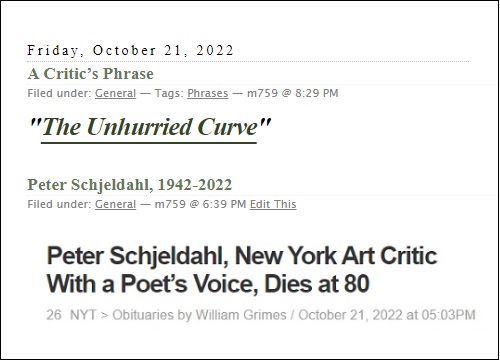
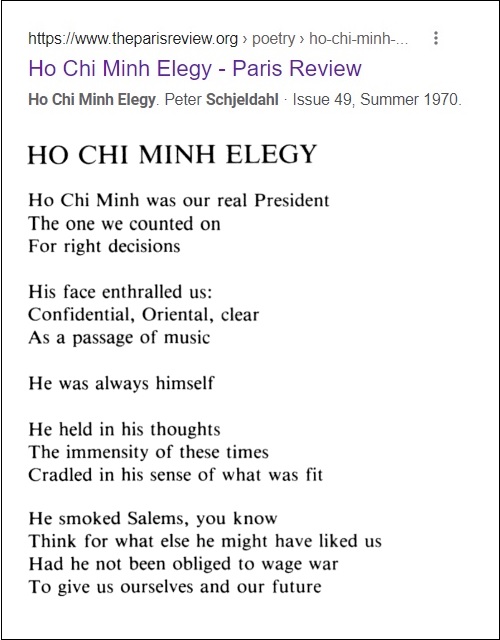
Thursday, February 20, 2020
In Memory of Jack Youngerman…
… An abstract artist who reportedly died at 93 yesterday.
A search in this journal for Shubnikov yields…
"Raiders of the Lost Stone" (December 26, 2017).
Monday, December 16, 2019
Penning
New Yorker art critic Peter Schjeldahl
as quoted today by Margaret Soltan —
Unlike computers. See ReactiveX and Observable.
Monday, October 15, 2018
The Other Side
"As far as I know, there is no escape for mortal beings from time.
But experimental ideas of practical access to eternity
exerted tremendous sway on educated, intelligent, and forward-
looking people in the late nineteenth and early twentieth centuries,
with a cutoff that was roughly coincident with the First World War.
William James died in 1910 without having ceased to urge
an open-minded respect for occult convictions."
— New Yorker art critic Peter Schjeldahl in the Oct. 22, 2018, issue.
Also in that issue —
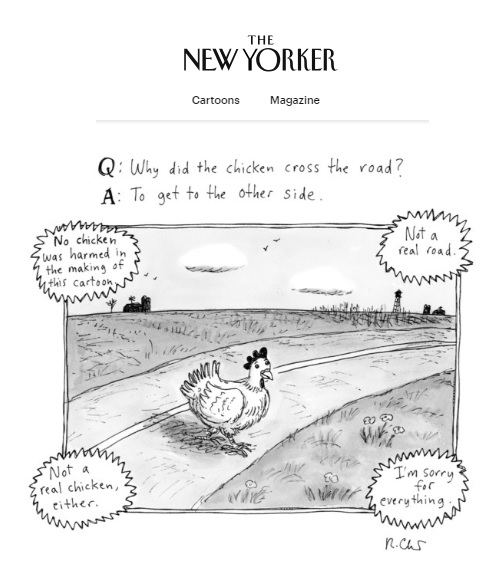
Sunday, January 1, 2017
The Unhurried Curve
From today's previous post —
"The unhurried curve got me.
It was like the horizon of a world
that made a non-world of
all of the space outside it."
— Peter Schjeldahl, "Postscript: Ellsworth Kelly,"
The New Yorker , December 30, 2015
Related figures —
Art critic Robert Hughes in "The Space of Horizons,"
a Log24 post of August 7, 2012:
Religion writer Huston Smith, who reportedly died
on December 30, 2016:
Like the Horizon
(Continued from a remark by art critic Peter Schjeldahl quoted here
last year on New Year's Day in the post "Art as Religion.")
"The unhurried curve got me.
It was like the horizon of a world
that made a non-world of
all of the space outside it."
— Peter Schjeldahl, "Postscript: Ellsworth Kelly,"
The New Yorker , December 30, 2015
This suggests some further material from the paper
that was quoted here yesterday on New Year's Eve —
"In teaching a course on combinatorics I have found
students doubting the existence of a finite projective
plane geometry with thirteen points on the grounds
that they could not draw it (with 'straight' lines)
on paper although they had tried to do so. Such a
lack of appreciation of the spirit of the subject is but
a consequence of the elements of formal geometry
no longer being taught in undergraduate courses.
Yet these students were demanding the best proof of
existence, namely, production of the object described."
— Derrick Breach (See his obituary from 1996.)
A related illustration of the 13-point projective plane
from the University of Western Australia:

Projective plane of order 3
(The four points on the curve
at the right of the image are
the points on the line at infinity .)
The above image is from a post of August 7, 2012,
"The Space of Horizons." A related image —
Click on the above image for further remarks.
Monday, December 26, 2016
Last December 26
|
Saturday, December 26, 2015
Midnight Reflection
|
This year on December 26 — A Lutheran-related note from 2015 …
… and one from Christmas 2016 —
Friday, December 16, 2016
Rothko’s Swamps
“… you don’t write off an aging loved one
just because he or she becomes cranky.”
— Peter Schjeldahl on Rothko in The New Yorker ,
issue dated December 19 & 26, 2016, page 27
He was cranky in his forties too —
See Rothko + Swamp in this journal.
Related attitude —
From Subway Art for Times Square Church , Nov. 7
Tuesday, April 26, 2016
A Sense of Identity
Peter Schjeldahl on Wallace Stevens in the current New Yorker —
"Stevens was born in 1879 in Reading, Pennsylvania,
the second of five children. His father, from humble
beginnings, was a successful lawyer, his mother a
former schoolteacher. Each night, she read a chapter
of the Bible to the children, who attended schools
attached to both Presbyterian and Lutheran churches,
where the music left an indelible impression on Stevens.
Both sides of the family were Pennsylvania Dutch,
an identity that meant little to him when he was young
but a great deal later on, perhaps to shore up a precarious
sense of identity."
See also this journal on Christmas Day, 2010 —
It's a start. For more advanced remarks from the same date, see Mere Geometry.
Friday, January 1, 2016
Art as Religion
A recent phrase from art critic Peter Schjeldahl —
"art in essence, immaculately conceived."
But see "symplectic" in this journal.
Wednesday, December 30, 2015
Painting the News
"His paintings weren’t a kind of art.
They seemed to present themselves as
art in essence, immaculately conceived.
They made me feel, precisely, dumb,
with nothing to say."
— Peter Schjeldahl today on the late
Ellsworth Kelly
Robbing Peter to Pay Paul continues …
"He must know somethin',
but don't say nothin'."
Saturday, December 26, 2015
Midnight Reflection
Thursday, December 10, 2015
Strange Myths
Peter Schjeldahl in the current (Dec. 14) New Yorker :
The phrase “outsider art” was coined in 1972 by a
British art historian, Roger Cardinal, to translate
the sense of “art brut ,” which Dubuffet had
considered rendering as art “raw,” “uncouth,” “crude,”
or “in the rough.” But the term misses the full thrust
of Dubuffet’s elevation of “people uncontaminated
by artistic culture,” as he called them. He aspired not
to make outsiders respectable but to destroy the
complacency of insiders. He disqualified even tribal
and folk artists, and spirited amateurs like Henri
Rousseau, for being captive to one tradition or another.
Art brut must be sui generis, from the hands and minds
of “unique, hypersensitive men, maniacs, visionaries,
builders of strange myths.”
The literary art of Fritz Leiber and Stephen King seems to
fit this definition.
Somewhat less brut — the literary art of Plato.
A non-literary illustration:

Time as "a moving
image of eternity.”
— Plato
Monday, November 9, 2015
The Forever Now
The title is that of a recent Museum of Modern Art exhibition —
The Forever Now :
Contemporary Painting
in an Atemporal World
December 14, 2014 – April 5, 2015
Related art —
Click the above image for its occurrences in this journal.
Whether this image has, in art critic Peter Schjeldahl's words,
"symbolic force and function," the reader may decide.
A Particular Mind
"The old, slow art of the eye and the hand, united in service
to the imagination, is in crisis. It’s not that painting is 'dead'
again—no other medium can as yet so directly combine
vision and touch to express what it’s like to have a particular
mind, with its singular troubles and glories, in a particular
body. But painting has lost symbolic force and function in a
culture of promiscuous knowledge and glutting information."
— Peter Schjeldahl in The New Yorker ,
issue dated Jan. 5, 2015
Cover of a 1980 book on computer music that contains a
helpful article on Walsh functions —
See, in this book, "Walsh Functions: A Digital Fourier Series,"
by Benjamin Jacoby (BYTE , September 1977). Some context:
Symmetry of Walsh Functions.
Excerpts from a search for Steve + Jobs in this journal —

Saturday, November 7, 2015
The Painted Word (Illustrated)


Related material:
- The Painted Word (1975), by Tom Wolfe (a search in this journal)
-
"Big Ideas: A Frank Stella Retrospective," by Peter Schjeldahl
in The New Yorker dated Nov. 9, 2015 (pp. 84-85).
Thursday, April 11, 2013
Naked Art
The New Yorker on Cubism:
"The style wasn’t new, exactly— or even really a style,
in its purest instances— though it would spawn no end
of novelties in art and design. Rather, it stripped naked
certain characteristics of all pictures. Looking at a Cubist
work, you are forced to see how you see. This may be
gruelling, a gymnasium workout for eye and mind.
It pays off in sophistication."
— Online "Culture Desk" weblog, posted today by Peter Schjeldahl
Non-style from 1911:

See also Cube Symmetry Planes in this journal.
A comment at The New Yorker related to Schjeldahl's phrase "stripped naked"—
"Conceptualism is the least seductive modern-art movement."
POSTED 4/11/2013, 3:54:37 PM BY CHRISKELLEY
(The "conceptualism" link was added to the quoted comment.)
Monday, December 31, 2012
Abstraction
"What possessed a generation of young European artists,
and a few Americans, to suddenly suppress recognizable imagery
in pictures and sculptures? Unthinkable at one moment, the strategy
became practically compulsory in the next."
— Peter Schjeldahl in the current New Yorker
The following remarks may or may not be relevant.
Paul Valéry, "Introduction to the Method of Leonardo da Vinci,"
La Nouvelle Revue , Paris, Vol. 95 (1895)—
"Regarded thus, the ornamental conception is to the individual arts
what mathematics is to the other sciences. …the objects chosen
and arranged with a view to a particular effect seem as if disengaged
from most of their properties and only reassume them in the effect,
in, that is to say, the mind of the detached spectator. It is thus
by means of an abstraction that the work of art can be constructed,
and is more or less easy to define according as the elements borrowed
from reality for it are more or less complex. Inversely it is by a sort of
induction, by the production of mental images, that all works of art are
appreciated, and this production must equally be more or less active,
more or less tiring, according as it is set in motion by a simple
interlacing on a vase or a broken phrase by Pascal."
— Translated by Thomas McGreevy (Valéry's Selected Writings,
New Directions, 1950)
Paul Valéry, "Introduction a la Méthode de Léonard de Vinci,"
La Nouvelle Revue , Paris, Tome 95 (1895), p. 762—
"De ce point de vue, la conception ornementale est aux arts
particuliers ce que la mathématique est aux autres sciences. De
même que les notions physiques de temps, longueur, densité,
masse, etc., ne sont dans les calculs que des quantités homo-
gènes et ne retrouvent leur individualité que dans l'interprétation
des résultats, de même les objets choisis et ordonnés en vue d'un
effet sont comme détachés de la plupart de leurs propriétés et
ne les reprennent que dans cet effet, dans l'esprit non prévenu
du spectateur. C'est donc par une abstraction que l'œuvre d'art
peut se construire, et cette abstraction est plus ou moins éner-
gique, plus ou moins facile à y découvrir, que les éléments em-
pruntés à la réalité en sont des portions plus ou moins com-
plexes. Inversement, c'est par une sorte d'induction, par la
production d'images mentales que toute œuvre d'art s'apprécie;
et cette production doit être également plus ou moins énergique,
plus ou moins fatigante selon qu'un simple entrelacs sur un
vase ou une phrase brisée de Pascal la sollicite."
Saturday, March 25, 2006
Saturday March 25, 2006
In memory of Rolf Myller,
who died on Thursday,
March 23, 2006, at
Mount Sinai Hospital
in Manhattan:
Myller was,
according to the
New York Times,
an architect
whose eclectic pursuits
included writing
children’s books,
The Bible Puzzle Book, and
Fantasex: A Book of Erotic Games.
He also wrote, the Times says,
“Symbols and Their Meaning
(1978), a graphic overview of
children’s nonverbal communication.”
This is of interest in view of the
Log24 reference to “symbol-mongers”
on the date of Myller’s death.
In honor of Women’s History Month
and of Myller’s interests in the erotic
and in architecture, we present
the following work from a British gallery.
This work might aptly be
retitled “Brick Shithouse.”
Related material:
(1) the artist’s self-portrait

and, in view of the cover
illustration for Myller’s
The Bible Puzzle Book,

(2) the monumental treatise
by Leonard Shlain
The Alphabet Versus
the Goddess: The Conflict
Between Word and Image.
|
Liza Lou 03.03.06 – 08.04.06 White Cube is pleased to present the first UK solo exhibition by Los Angeles-based artist Liza Lou. Combining visionary, conceptual and craft approaches, Lou makes mixed-media sculptures and room-size installations that are suggestive of a transcendental reality. Lou’s work often employs familiar, domestic forms, crafted from a variety of materials such as steel, wood, papier-mâché and fibreglass, which is then covered with tiny glass beads that are painstakingly applied, one at a time, with tweezers. Dazzling and opulent and constantly glistening with refracted light, her sculptures bristle with what Peter Schjeldahl has aptly described as ‘surreal excrescence’. This exhibition, a meditation on the vulnerability of the human body and the architecture of confinement, will include several new figurative sculptures as well as two major sculptural installations. Security Fence (2005) is a large scale cage made up of four steel, chain link walls, topped by rings of barbed wire and Cell (2004-2006), as its name suggests, is a room based on the approximate dimensions of a death row prison cell, a kind of externalized map of the prisoner’s mind. Both Security Fence and Cell, like Lou’s immense earlier installations Kitchen (1991-1995) and Back Yard (1995-1999) are characterized by the absence of their real human subject. But whereas the absent subject in Kitchen and Back Yard could be imagined through the details and accessories carefully laid out to view, in Lou’s two new installations the human body is implied simply through the empty volume created by the surrounding architecture. Both Cell and Security Fence are monochromatic and employ iconic forms that make direct reference to Minimalist art in its use of repetition, formal perfection and materiality. In contrast to this, the organic form of a gnarled tree trunk, Scaffold (2005-2006), its surface covered with shimmering golden beads, juts directly out from the wall. Lou’s work has an immediate ‘shock’ content that works on different levels: first, an acknowledgement of the work’s sheer aesthetic impact and secondly the slower comprehension of the labour that underlies its construction. But whereas in Lou’s earlier works the startling clarity of the image is often a counterpoint to the lengthy process of its realization, for the execution of Cell, Lou further slowed down the process by using beads of the smallest variety with their holes all facing up in an exacting hour-by-hour approach in order to ‘use time as an art material’. Concluding this body of work are three male figures in states of anguish. In The Seer (2005-2006), a man becomes the means of turning his body back in on himself. Bent over double, his body becomes an instrument of impending self-mutilation, the surface of his body covered with silver-lined beads, placed with the exactitude and precision of a surgeon. In Homeostasis (2005-2006) a naked man stands prostrate with his hands up against the wall in an act of surrender. In this work, the dissolution between inside and outside is explored as the ornate surface of Lou’s cell-like material ‘covers’ the form while exposing the systems of the body, both corporeal and esoteric. In The Vessel (2005-2006), Christ, the universal symbol of torture and agony holds up a broken log over his shoulders. This figure is beheaded, and bejewelled, with its neck carved out, becoming a vessel into which the world deposits its pain and suffering. Lou has had numerous solo exhibitions internationally, including Museum Kunst Palast, Düsseldorf, Henie Onstad Kunstsenter, Oslo and Fondació Joan Miró, Barcelona. She was a 2002 recipient of the MacArthur Foundation Fellowship. Liza Lou’s film Born Again (2004), in which the artist tells the compelling and traumatic story* of her Pentecostal upbringing in Minnesota, will be screened at 52 Hoxton Square from 3 – 25 March courtesy of Penny Govett and Mick Kerr. Liza Lou will be discussing her work following a screening of her film at the ICA, The Mall, London on Friday 3 March at 7pm. Tickets are available from the ICA box office (+ 44 (0) 20 7930 3647). A fully illustrated catalogue, with a text by Jeanette Winterson and an interview with Tim Marlow, will accompany the exhibition. White Cube is open Tuesday to Saturday, 10.00 am to 6.00 pm.
For further information please contact Honey Luard or Susannah Hyman on + 44 (0) 20 7930 5373 * Warning note from Adrian Searle |







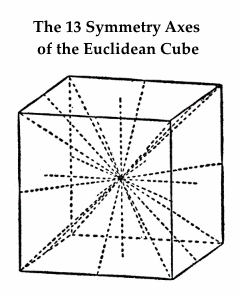



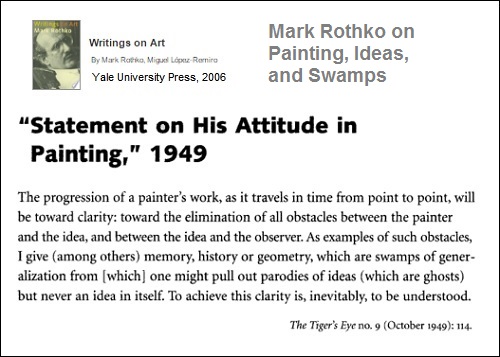

!['No results found in this book [THE LOOM OF GOD] for SYMPLECTIC'](http://www.log24.com/log/pix15A/151031-Pickover-Loom_of_God-search-for-Symplectic.jpg)



![IMAGE- The Art World: Shapes of Things- The Birth of the Abstract [New Yorker title]](http://www.log24.com/log/pix12D/121231-Schjeldahl-Review.jpg)
